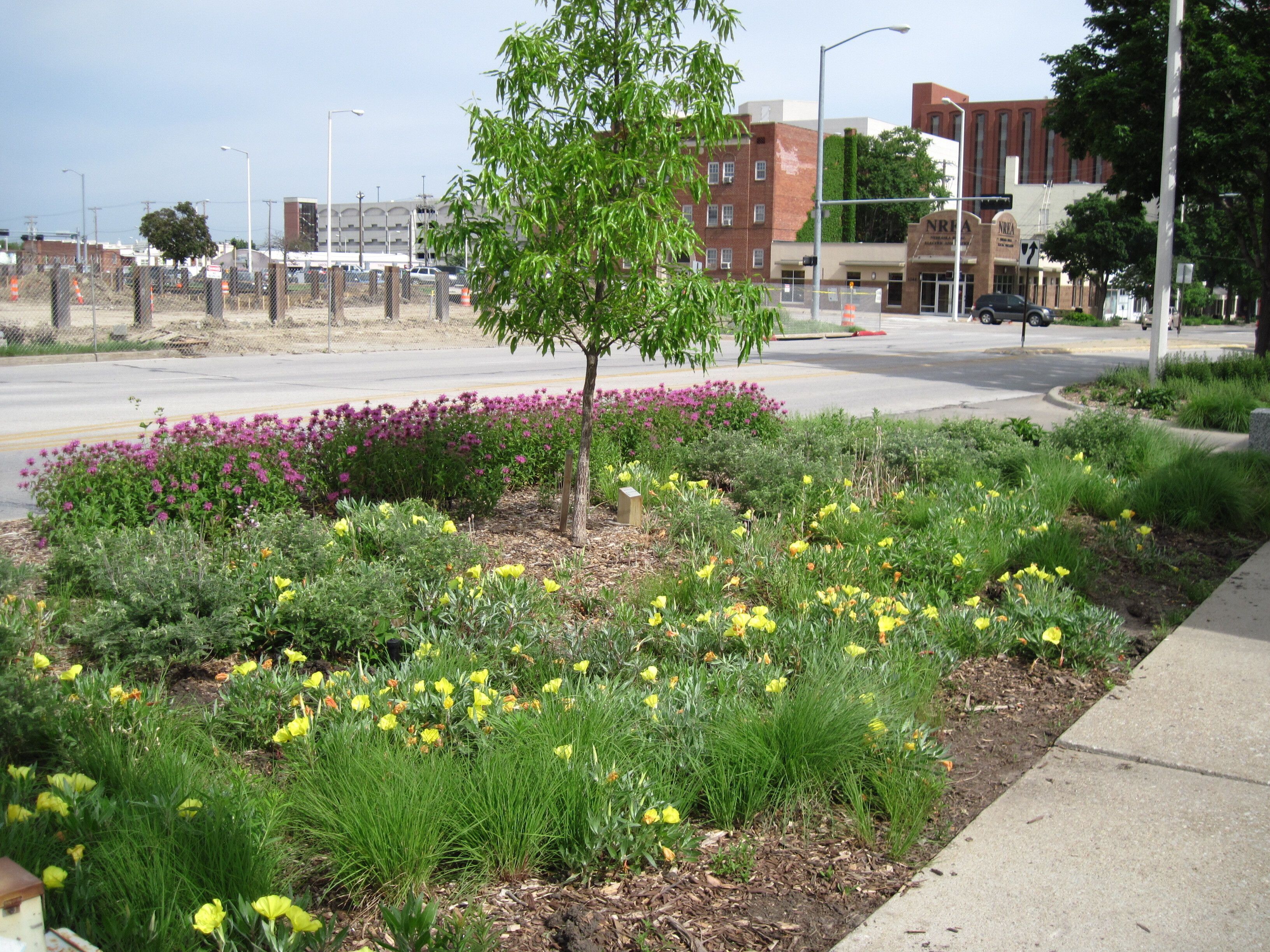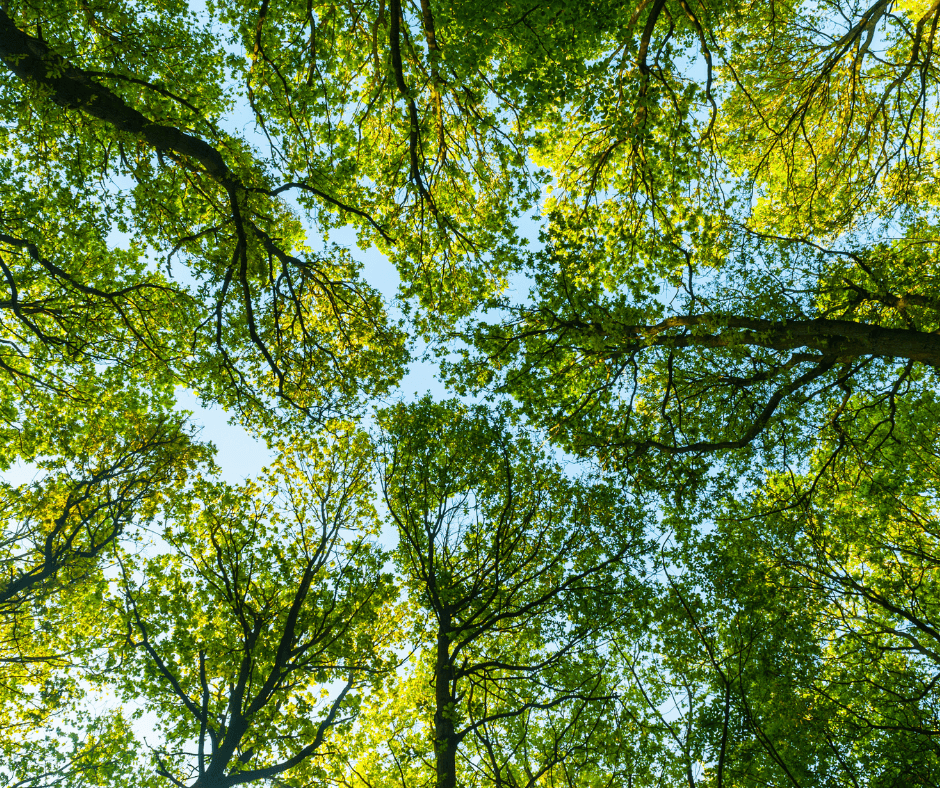
Today’s guest writer is Sarah Spilinek, the Community Landscapes & Forestry intern at the Nebraska Statewide Arboretum and Nebraska Forest Service. She is a third-year landscape architecture student at UNL and has spent this summer helping to organize Bloom Box, coordinating grant projects, and working with native plants and trees.
Nebraska has had some intensely hot summers, and they seem to only be getting hotter! If you live in a town or city, you are likely feeling the effects of the heat even more than you would if you lived in a more rural part of the state. This is because urban areas have a lot of people, movement, concrete, buildings, and hardscapes that retain and produce heat much more than organic material does. This is what’s called the urban heat island effect. The good news is that urban heat can be reduced through the introduction of trees, plants and softscape in more densely populated or urban areas.
As a landscape architecture student, this is a problem that I and my peers are facing in the world of urban design and planning. How can we reduce this effect in urban areas? The answer will be no surprise: plants! Trees naturally offer shade, sequester carbon and release moisture into the air to combat these negative heat islands. Plantings minimize these effects as well, as they do the same while offering softscape alternatives to concrete and asphalt.
We’re seeing more and more green initiatives to bring in street trees and downtown native plantings. A more radical approach to reducing the urban heat island effect is through “greening.” "Greening" cities happens through the application of plants wherever possible, including green planted roofs, urban forests, urban parks or plantings on the sides of buildings. These green infrastructure projects will both reduce the temperatures of cities and improve air quality. Another approach is to use light, bright colors on hardscape surfaces. Lighter colors do not hold as much heat as darker colors, so a white roof will be a lot cooler than a dark one.
You may not work as a landscape architect or serve on a city planning board, but you can still help to mitigate urban heat island effect by planting trees to create more shade in your neighborhood, by replacing hardscape materials with plants or softscape and by supporting non-profits (such as NSA!) that partner with Nebraska communities to provide green infrastructure. Every individual can help our cities and towns move toward a greener and cooler future!


